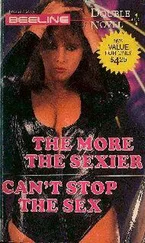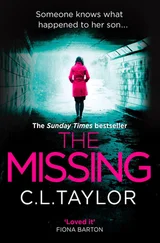Lie detectors (polygraphs) are partially skin conductance tests. They operate on the theory that lying causes anxiety, which triggers the skin to perspire imperceptibly. When I was in college, I applied for a summer job as a secretary at a large jewelry company. I had to take a lie detector test as part of the application process. The test was administered in a small, dingily lit room with linoleum floors, by a thin, cigarette-puffing man with pocked yellow skin. The man asked me a series of warm-up questions: my name, address, and so on, to establish my baseline level of skin conductance. Then the questions grew more probing and the examiner’s manner harsher. Had I been arrested? Had I ever shoplifted? Had I used cocaine? With this last question my interrogator peered at me intently. As it happens, I never had tried cocaine. But he seemed to think I had. The accusing look on his face was the equivalent of the old policeman’s trick where they tell the suspect that they have the damning evidence and there’s no point denying it.
I knew the man was mistaken, but I still felt myself blush. And sure enough, the test came back showing I’d lied on the cocaine question. My skin is so thin, apparently, that it sweats in response to imaginary crimes!
We tend to think of coolness as a pose that you strike with a pair of sunglasses, a nonchalant attitude, and drink in hand. But maybe we didn’t choose these social accessories at random. Maybe we’ve adopted dark glasses, relaxed body language, and alcohol as signifiers precisely because they camouflage signs of a nervous system on overdrive. Sunglasses prevent others from seeing our eyes dilate with surprise or fear; we know from Kagan’s work that a relaxed torso is a hallmark of low reactivity; and alcohol removes our inhibitions and lowers our arousal levels. When you go to a football game and someone offers you a beer, says the personality psychologist Brian Little, “they’re really saying hi, have a glass of extroversion.”
Teenagers understand instinctively the physiology of cool. In Curtis Sittenfeld’s novel Prep , which explores the adolescent social rituals of boarding-school life with uncanny precision, the protagonist, Lee, is invited unexpectedly to the dorm room of Aspeth, the coolest girl in school. The first thing she notices is how physically stimulating Aspeth’s world is. “From outside the door, I could hear pounding music,” she observes. “White Christmas lights, currently turned on, were taped high up along all the walls, and on the north wall they’d hung an enormous orange and green tapestry.… I felt overstimulated and vaguely irritated. The room I shared with [my roommate] seemed so quiet and plain, our lives seemed so quiet and plain. Had Aspeth been born cool, I wondered, or had someone taught her, like an older sister or a cousin?”
Jock cultures sense the low-reactive physiology of cool, too. For the early U.S. astronauts, having a low heart rate, which is associated with low reactivity, was a status symbol. Lieutenant Colonel John Glenn, who became the first American to orbit the Earth and would later run for president, was admired by his comrades for his supercool pulse rate during liftoff (only 110 beats per minute).
* * *
But physical lack of cool may be more socially valuable than we think. That deep blush when a hard-bitten tester puts his face an inch from yours and asks if you’ve ever used cocaine turns out to be a kind of social glue. In a recent experiment, a team of psychologists led by Corine Dijk asked sixty-odd participants to read accounts of people who’d done something morally wrong, like driving away from a car crash, or something embarrassing, like spilling coffee on someone. The participants were shown photographs of the wrongdoers, who had one of four different facial expressions: shame or embarrassment (head and eyes down); shame/embarrassment plus a blush; neutral; or neutral with a blush. Then they were asked to rate how sympathetic and trustworthy the transgressors were.
It turned out that the offenders who blushed were judged a lot more positively than those who didn’t. This was because the blush signified concern for others. As Dacher Keltner, a psychologist at the University of California, Berkeley, who specializes in positive emotions, put it to the New York Times , “A blush comes online in two or three seconds and says, ‘I care; I know I violated the social contract.’ ”
In fact, the very thing that many high-reactives hate most about blushing—its uncontrollability—is what makes it so socially useful. “Because it is impossible to control the blush intentionally,” Dijk speculates, blushing is an authentic sign of embarrassment. And embarrassment, according to Keltner, is a moral emotion. It shows humility, modesty, and a desire to avoid aggression and make peace. It’s not about isolating the person who feels ashamed (which is how it sometimes feels to easy blushers), but about bringing people together.
Keltner has tracked the roots of human embarrassment and found that after many primates fight, they try to make up. They do this partly by making gestures of embarrassment of the kind we see in humans—looking away, which acknowledges wrongdoing and the intention to stop; lowering the head, which shrinks one’s size; and pressing the lips together, a sign of inhibition. These gestures in humans have been called “acts of devotion,” writes Keltner. Indeed, Keltner, who is trained in reading people’s faces, has studied photos of moral heroes like Gandhi and the Dalai Lama and found that they feature just such controlled smiles and averted eyes.
In his book, Born to Be Good , Keltner even says that if he had to choose his mate by asking a single question at a speed-dating event, the question he would choose is: “What was your last embarrassing experience?” Then he would watch very carefully for lip-presses, blushing, and averted eyes. “The elements of the embarrassment are fleeting statements the individual makes about his or her respect for the judgment of others,” he writes. “Embarrassment reveals how much the individual cares about the rules that bind us to one another.”
In other words, you want to make sure that your spouse cares what other people think. It’s better to mind too much than to mind too little.
* * *
No matter how great the benefits of blushing, the phenomenon of high sensitivity raises an obvious question. How did the highly sensitive manage to survive the harsh sorting-out process of evolution? If the bold and aggressive generally prevail (as it sometimes seems), why were the sensitive not selected out of the human population thousands of years ago, like tree frogs colored orange? For you may, like the protagonist of The Long Long Dances , be moved more deeply than the next person by the opening chords of a Schubert impromptu, and you may flinch more than others at the smashing of bone and flesh, and you may have been the sort of child who squirmed horribly when you thought you’d broken someone’s toy, but evolution doesn’t reward such things.
Or does it?
Elaine Aron has an idea about this. She believes that high sensitivity was not itself selected for, but rather the careful, reflective style that tends to accompany it. “The type that is ‘sensitive’ or ‘reactive’ would reflect a strategy of observing carefully before acting,” she writes, “thus avoiding dangers, failures, and wasted energy, which would require a nervous system specially designed to observe and detect subtle differences. It is a strategy of ‘betting on a sure thing’ or ‘looking before you leap.’ In contrast, the active strategy of the [other type] is to be first, without complete information and with the attendant risks—the strategy of ‘taking a long shot’ because the ‘early bird catches the worm’ and ‘opportunity only knocks once.’ ”
Читать дальше
![Сьюзан Кейн Quiet [The Power of Introverts in a World That Can't Stop Talking] обложка книги](/books/33084/syuzan-kejn-quiet-the-power-of-introverts-in-a-wo-cover.webp)











